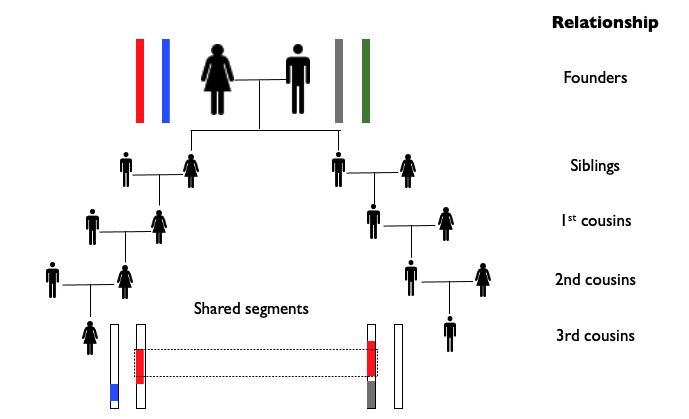Chapter 5: Relative finding#
In this chapter, we will explore how we can infer the familial relationship between two individuals given their genotypes. We will do this by using multiple metrics to quantify how much of their genomes two individuals share, and deriving the expected value of those metrics for different relationship types.
We can think of our genome as being a patchwork derived from the genomes of our many ancestors. Chromosomes are being broken down by recombination each generation. In general, we will share very long segments with our very close relatives (parents, siblings), and shorter segments with our more distant relatives (e.g. 5th cousins).
The figure below shows a pedigree with different relationship types we will refer back to. We will use founders to refer to individuals who contribute new genetic material to the pedigree. On the other hand, non-founders inherit their genome segments from founders. Siblings share both of their parents. Half-siblings share one parent but not the other. Cousins share two of their four grandparents. 2nd cousins share great-grandparents, etc. We will additionally consider avuncular relationships, which refers to aunt/uncle vs. neice/nephew.

